Echidnas - Definition, Examples, Quiz, FAQ, Trivia
Discover the fascinating world of Australia's spiny monotreme
What is an Echidna?
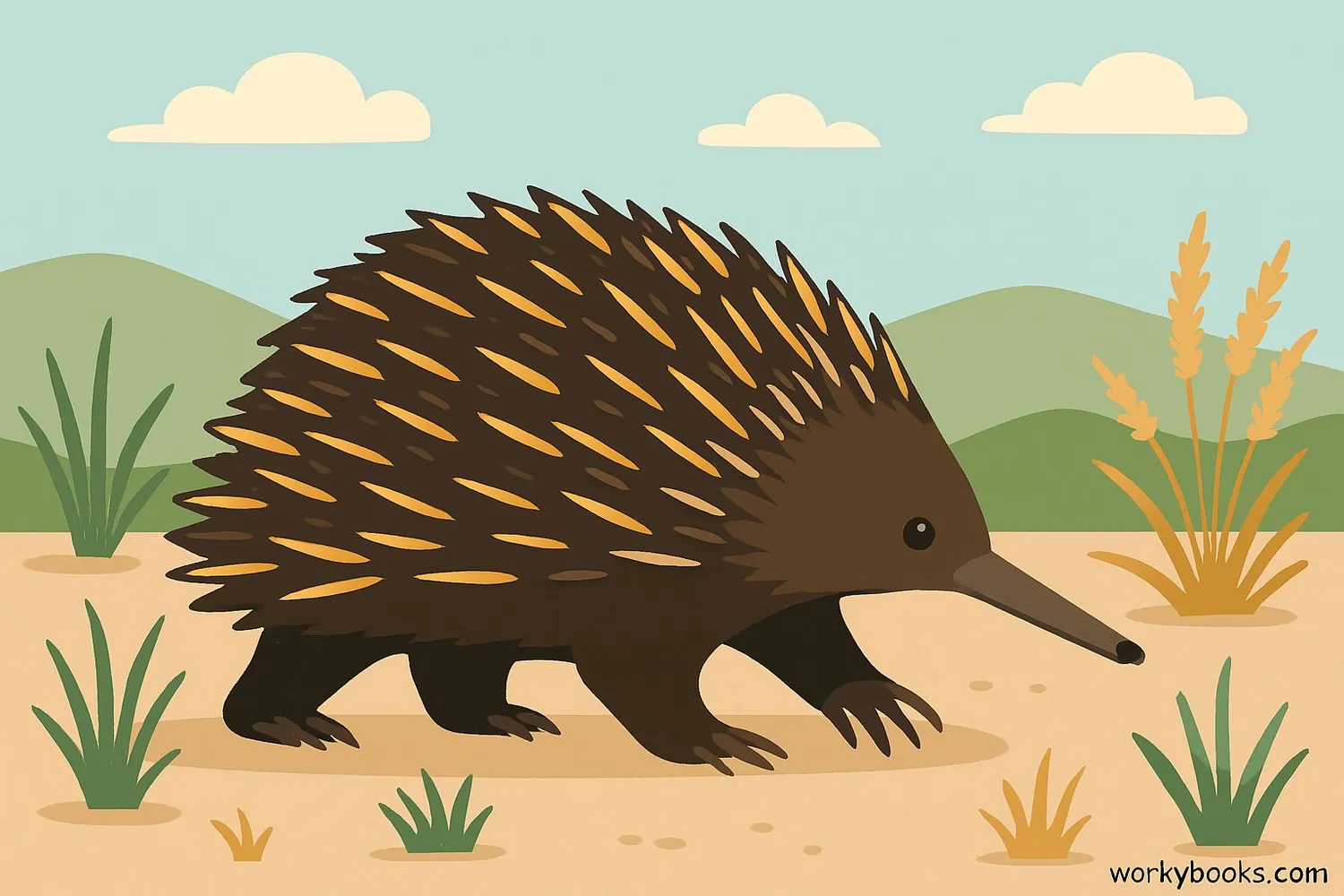
Echidnas are one of the most unusual mammals on Earth! They're spiny creatures that belong to a special group called monotremes - mammals that lay eggs instead of giving birth to live young. Along with the platypus, echidnas are the only egg-laying mammals in the world.
These amazing animals are sometimes called "spiny anteaters" because they use their long, sticky tongues to eat ants and termites. But they're not actually related to true anteaters. Echidnas have been around for millions of years, with fossils showing they've changed very little over time.
Monotreme Fact!
Echidnas and platypuses are the only mammals that lay eggs! All other mammals give birth to live young.
Physical Features
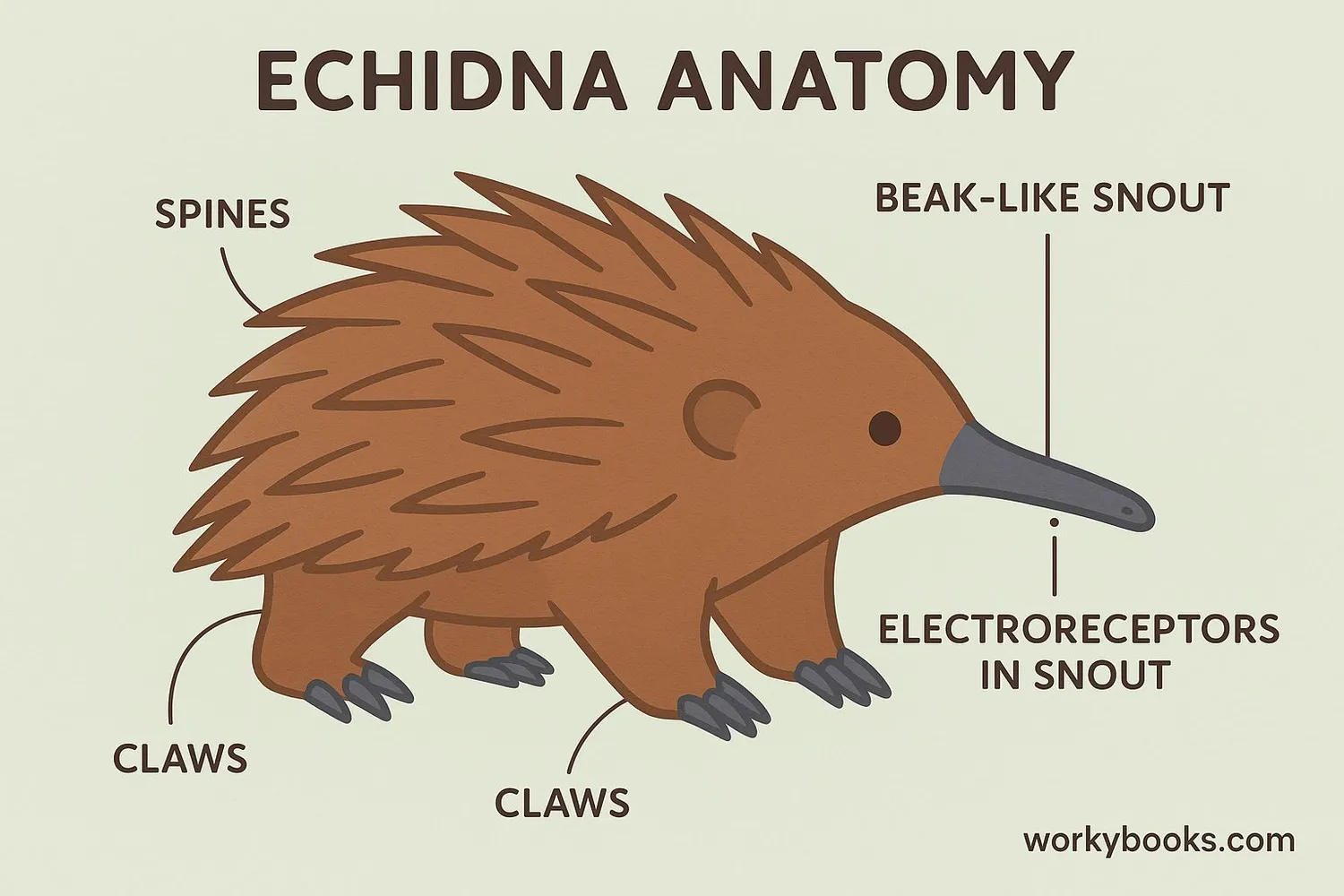
Echidnas have several special features that help them survive:
Spines
Their back and sides are covered with sharp spines made of keratin (like your fingernails)
Beak-like Snout
A long, slender snout that functions like a beak for finding food
Electroreception
Special sensors in their snout detect electrical signals from insects
Powerful Claws
Strong claws for digging into ant nests and termite mounds
Defense Strategy
When threatened, they curl into a ball or dig straight down
An echidna's spines are actually modified hairs. They have coarse hair between their spines that helps keep them warm. Their snout contains both mechanoreceptors (touch sensors) and electroreceptors that can detect the tiny electrical signals given off by insect muscles.
Habitat & Distribution
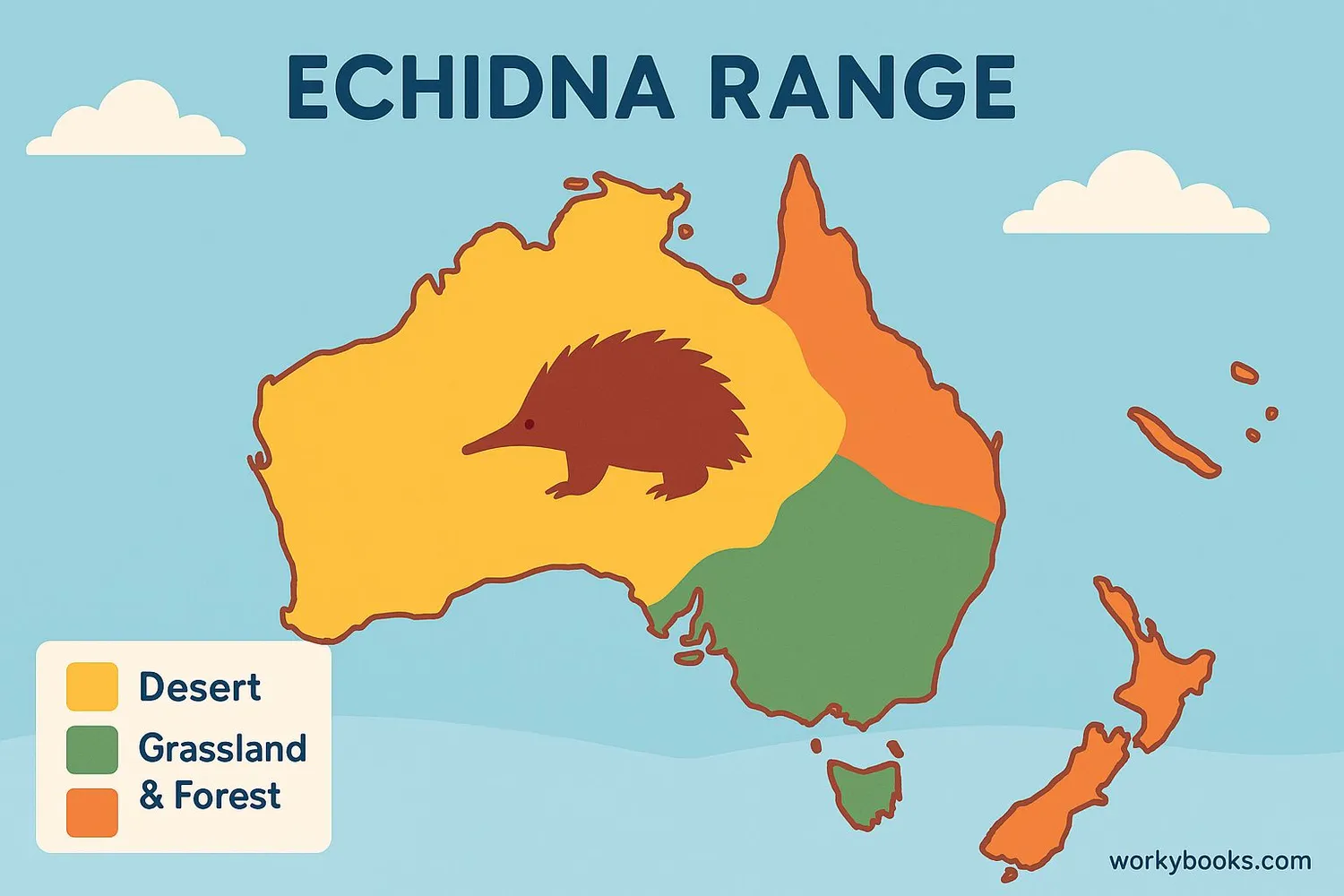
Echidnas are found throughout Australia and on the island of New Guinea. They're incredibly adaptable and can live in many different environments:
Forests
Rainforests and eucalyptus forests provide shelter and food
Woodlands
Open areas with scattered trees are ideal habitats
Deserts
Echidnas can survive in arid regions by adapting their behavior
Echidnas are solitary animals that don't establish territories. They roam over large areas, covering several kilometers in search of food. During extreme weather, they can enter a state of torpor (similar to hibernation) to conserve energy.
Diet & Feeding
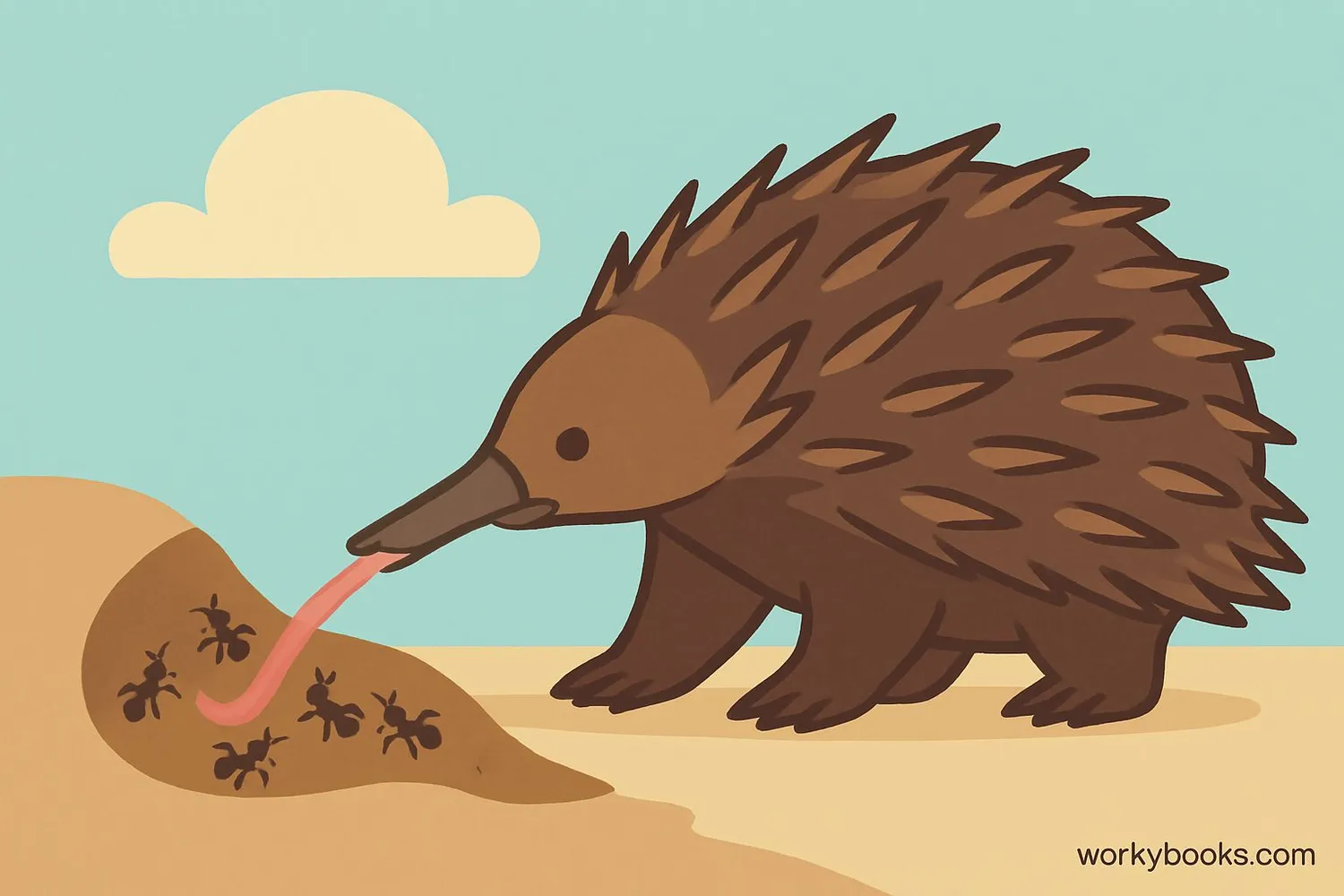
Echidnas are insectivores, which means they eat insects. Their diet mainly consists of:
Ants
Different species of ants are their primary food source
Termites
Termites provide important nutrients
Other Insects
They occasionally eat beetles and insect larvae
Echidnas don't have teeth! Instead, they use their long, sticky tongues to collect insects. They crush their food between hard pads on the roof of their mouth and their tongue. An echidna can extend its tongue up to 18 cm (7 inches) to reach insects in narrow spaces.
They use their powerful front claws to break open ant nests and termite mounds. Special muscles in their snout allow them to open and close their nostrils while feeding to prevent dirt from entering their nose.
Reproduction & Life Cycle
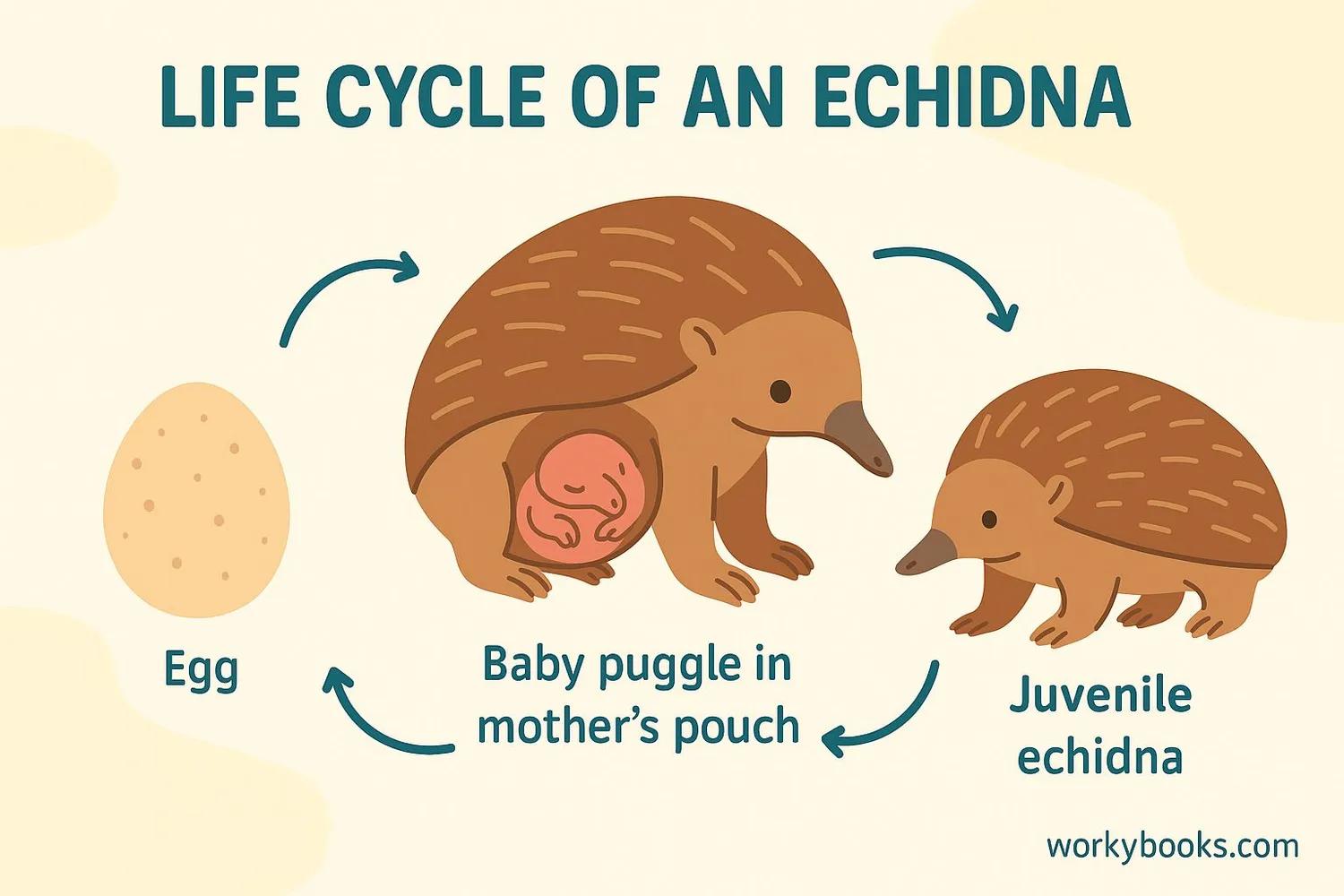
Echidnas have one of the most fascinating reproductive cycles in the animal kingdom:
Egg Laying
Female echidnas lay a single leathery egg
Pouch Development
The mother forms a temporary pouch to hold her egg
Baby Puggle
After 10 days, a baby echidna (puggle) hatches
Milk Feeding
The puggle drinks milk from special patches in the pouch
Growing Spines
After 2-3 months, the puggle develops spines and leaves the pouch
Baby echidnas are called puggles. They're about the size of a jellybean when they hatch! The mother keeps her puggle in a special nursery burrow once it becomes too spiny for her pouch. She returns every few days to feed it until it's about 7 months old.
Puggle Fact!
Baby echidnas don't have spines when they hatch! Their spines begin to grow after about 50 days.
Echidna Quiz
Test your echidna knowledge with this quiz! Answer all 5 questions to see how much you've learned.
Frequently Asked Questions
Here are answers to some common questions about echidnas:
Fun Echidna Trivia
Discover some amazing facts about these unique creatures!
Temperature Masters
Echidnas have the lowest body temperature of any mammal (around 32°C/89°F) and can lower it to just 4°C (39°F) during hibernation!
Big Brain Energy
Echidnas have the largest prefrontal cortex relative to body size of any mammal! This brain region is associated with complex thinking in humans.
Electroreception Experts
Echidnas have up to 2,000 electroreceptors in their snouts - more than any other mammal! These help them detect electrical signals from buried insects.
Mating Trains
During breeding season, female echidnas are sometimes followed by up to 10 males in a line called a "mating train" that can last several weeks!


